UPSC GS 1
American Declaration of Independence
- News: July 4 marks the 248th Independence Day of the United States.
- American Revolution: The Revolutionary War took place from 1775-83 also known as the American Revolution.
- Cause: Tensions between residents of Great Britain’s 13 North American colonies and the colonial government, which represented the British crown.
- Major Events Leading to the American War of Independence:
- Sugar Act of 1764:
-
- Imposed a tax on sugar and molasses imported into the colonies and aimed to raise revenue for Britain and reduce smuggling.
- Angered colonists who saw it as an unjust tax without representation.
-
- Stamp Act of 1765:
-
- Required colonists to purchase a stamp for every piece of paper used, including legal documents, newspapers, and playing cards.
-
- Townshend Acts of 1767:
-
- Series of taxes on imported goods such as glass, paper, paint, lead, and tea.
- Revenues used to pay British officials in the colonies, undermining colonial self-government.
-
- Boston Massacre (1770):
-
- Confrontation between British soldiers and colonists in Boston. Soldiers fired into a crowd, killing five colonists.
-
- Tea Act of 1773:
-
- Allowed the British East India Company to sell surplus tea directly to the colonies, bypassing colonial merchants and assert British control.
- Led to widespread resentment and protests among colonists who viewed it as a monopoly.
-
- Boston Tea Party (1773):
-
- Protest against the Tea Act where colonists, disguised as Native Americans, boarded British ships and dumped 342 chests of tea into Boston Harbor.
- Significant act of defiance against British authority.
-
- Declaration of Independence (1776):
-
- Approval: Declaration of Independence document was approved by the 2nd Continental Congress on July 4, 1776 that announced the separation of 13 North American British colonies from Great Britain.
- First Draft: The text itself was largely written by Jefferson, who had previously written ‘A Summary View of the Rights of British America’ in 1775.
- Key Ideas of the Declaration of Independence:
- Equality and Rights: God made all men equal and gave them the rights of life, liberty, and the pursuit of happiness.
- Government’s Role: The main business of the government is to protect these rights.
- Right to Revolt: If a government tries to withhold these rights, the people are free to revolt and to set up a new government.
-
Read this: Urban Flooding in India: Causes, Impacts, and Mitigation Strategies | UPSC
UPSC GS 2
BRICS
- News: BRICS is attracting Southeast Asian countries, with Thailand and Malaysia being the latest to express their interest in joining the bloc.
- What is BRICS?
- Definition: BRICS is an acronym for the grouping of the world’s leading emerging economies, namely Brazil, Russia, India, China, and South Africa.
- Establishment:
-
- In 2001, the British Economist Jim O’Neill coined the term BRIC to describe Brazil, Russia, India, and China.
- South Africa was invited to join BRIC in December 2010, after which the group adopted the acronym BRICS.
- The first formal summit took place in Yekaterinburg, Russia, in 2009.
-
- Share of BRICS:
-
- The BRICS brings together 5 of the largest developing countries of the world.
- Representing 45% of the global population
- 24% of the global GDP and 16% of the global trade.
-
- Chairmanship:
-
- The chairmanship of the forum is rotated annually among the members, in accordance with the acronym B-R-I-C-S.
- Russia is the current chair of BRICS for 2024.
- India was the chair for 2021.
-
- Headquarter: Shanghai, China
NIRMAN Portal
- News: Union Minister for Coal and Mines has launched a portal “Noble Initiative for Rewarding Mains Aspirants of National Civil Services Examination (NIRMAN)”.
- Overview:
-
- This initiative aligns with the ‘Mission Karmayogi’ and is powered by Coal India Limited (CIL) as part of its Corporate Social Responsibility (CSR) efforts.
- It aims to provide financial support to UPSC examination-qualified candidates from specific socio-economic backgrounds.
-
- Financial Support: The scheme is aimed towards providing support of Rs 1,00,000/- (Rupees One Lakh) to the Preliminary examination qualified candidates.
- Target Groups:
-
- Scheduled Caste (SC)
- Scheduled Tribe (ST)
- Female candidates
- Third gender candidates
-
- Eligibility Criteria:
-
- Annual family income should be less than Rs 800,000
- Aspirants need to be permanent residents of any of the 39 operational districts of the company including Jharkhand’s Dhanbad and Ranchi, West Bengal’s Kolkata, Chhattisgarh’s Bilaspur and Maharashtra’s Nagpur
-
- Application Process: Eligible candidates can submit their applications through the Nirman portal to avail of the scheme benefits.
- Coal India Limited:
-
- A state-owned coal mining corporation which was launched in 1975.
- A Maharatna Company
- The company holds the title of the single largest coal producer in the world and accounts for 80% coal produced in India.
- The company and its subsidiaries operate in eight states of India.
-
UPSC GS 3
Weapon Systems School
- News: Indian Air Force Chief Air Chief Marshal V.R. Chaudhari has inaugurated the newly established Weapon Systems School (WSS) at Air Force Station Begumpet, Hyderabad.
- Overview: The Weapon Systems School (WSS) is a new branch of the Indian Air Force (IAF) aimed at recalibrating and transforming the IAF into a future-oriented force.
- Streams: The WSS will encompass four distinct streams:
-
- Flying Stream: To operate the weapons and systems in airborne platforms like the Sukhoi-30 MKI and C-130J;
- Remote Stream: To operate remotely piloted aircraft;
- Mission Commanders And Operators: For Surface to Air and Surface-to-Surface weapon systems,
- Intelligence Stream: For handling space-based intelligence and imagery.
-
- Objective: The WSS is designed to provide effect-based training that is contemporary and aligns with the evolving requirements of the IAF.
Money Mule
- News: Reserve Bank of India Governor Shaktikanta Das emphasized that banks should intensify their efforts to combat ‘mule accounts,’ which are frequently used to launder the proceeds of fraudulent schemes.
- Definition: A money mule is an individual who transfers or moves illegally acquired money on behalf of someone else.
- Purpose: Criminals recruit money mules to help launder proceeds derived from online scams, frauds, or crimes like human trafficking and drug trafficking.
- Role in Crime: Money mules add layers of distance between crime victims and criminals, making it more difficult for law enforcement to trace money trails accurately.
- Methods of Transfer: Bank accounts, cashier’s checks, virtual currency, prepaid debit cards, or money service businesses.
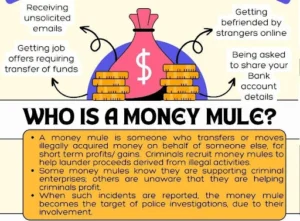
- Recruitment Techniques: Criminals often use fake job adverts or create social media posts about quick money-making opportunities to recruit potential money mules.
- Awareness and Motivation:
-
- Some money mules are aware they are supporting criminal enterprises.
- Others are unaware and believe they are helping someone they trust.
- Money mules often receive a commission for their service or assist due to a perceived trusting relationship.
-
- Legal Implications:
-
- When frauds are reported, money mules become targets of police investigations.
- Even if they are not directly involved in the crimes that generate the money, money mules are considered accomplices as they launder the proceeds of such crimes.
-
Project Nexus
- News: The Reserve Bank of India (RBI) has joined Project Nexus.
- Overview: Project Nexus is a multilateral international initiative designed to enable instant cross-border retail payments by interlinking domestic Fast Payments Systems (FPSs).
- Initiation: Project Nexus was conceptualized by the Innovation Hub of the Bank for International Settlements (BIS).
- Goal: The primary goal of Project Nexus is to enable instant cross-border retail payments by connecting domestic Fast Payment Systems (FPSs) globally.
- Implementation: It is the first BIS Innovation Hub project in the payments area to move towards live implementation.
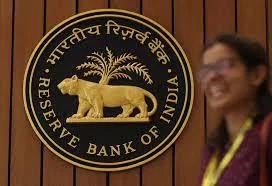
- Objective:
-
- The project aims to standardize the way Instant Payment Systems (IPS) connect to each other, avoiding the need for payment system operators to build custom connections for each new country.
- This standardization simplifies the process and facilitates smoother integration.
-
- Founding Members of Project Nexus:
-
- 4 Association of Southeast Asian Nations (ASEAN) — Malaysia, Philippines, Singapore, and Thailand; and India would be the founding members.
- Indonesia is also set to join the platform.
- These countries signed an agreement with BIS on June 30, 2024, in Basel, Switzerland.
-
- Key Features and Benefits
-
- Instant Cross-Border Payments:
- Nexus enables cross-border payments to be completed within 60 seconds in most cases.
- Single Connection Platform:
- Operators can connect to the Nexus platform once, which grants them access to all other countries on the network.
- This single connection approach accelerates the growth of instant cross-border payments and reduces the complexity and costs associated with building multiple bilateral connections.
- Instant Cross-Border Payments:
-
Nightjar
- News: A team of scientists from the Swedish Museum of Natural History has described a new species of nightjar in the Lesser Sunda Islands.
- Definition: Nightjars are medium-sized, nocturnal, insectivorous birds belonging to the family Caprimulgidae and the order Caprimulgiformes.
- Distribution:
-
- True nightjars occur almost worldwide in temperate to tropical regions, except for New Zealand and some islands of Oceania.
-
- Habitat: They live in scrublands, grasslands, and woodlands.
- Characteristics:
-
- They have long wings, short legs, tiny bills, large eyes, and flat heads.
- They have protective colouring of gray, brown, or reddish brown.
- They feed on flying insects that they catch on the wing at night.
- Nightjars do not build nests; they lay their eggs directly on the ground.
- Males make a clapping sound with their wings while defending their territories or courting females.
- During the day, they rest on the ground or on branches.
-
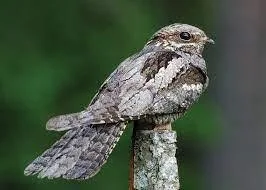
- Cultural Reference: In many European countries, the nightjar is known as a ‘goatsucker’ after its Latin name, due to an old myth that these birds sucked milk from goats.
- IUCN Status: Least Concern
- Indian Nightjar ((Caprimulgus Asiaticus):
- The Indian nightjar is a small nightjar which is a resident breeder in open lands across South Asia and Southeast.
-
- During the day, Indian nightjar lies still on the ground, concealed by its plumage; it is then difficult to detect, blending in with the soil.
- Indian nightjars are found in Afghanistan, Iran, Indian subcontinent, Myanmar, Thailand, Cambodia, Vietnam and Laos.
-
- Lesser Sunda Islands:
-
- Sunda Islands include the Greater Sundas and the Lesser Sundas.
- The islands are part of a volcanic arc, the Sunda Arc, formed by subduction along the Sunda Trench in the Java Sea.
- The Lesser Sunda Islands (or Nusa Tenggara) are a group of islands in southern Southeast Asia, north of Australia.
- It lies in the southeastern portion of Indonesia between Java and Bali to the west, New Guinea to the east, Australia to the south, and Sulawesi to the north.
- Major Islands include Bali, Lombok, Sumbawa, Sumba, and Flores, Timor, Alor.
-
Indian Gaur
- News: Indian Gaur was spotted in the Atmakur division Nallamala forest after a gap of several decades, giving hope to wildlife enthusiasts.
- About Indian Gaur:
- Common Name: Indian Bison
- Scientific Name: Bos gaurus
- Distribution: Indigenous to South and Southeast Asia
- Habitat:
-
- Gaurs primarily inhabit evergreen and semi-evergreen forests, as well as moist deciduous forests with open grasslands.
- They prefer hilly terrains below an altitude of 1,500-1,800 meters with large, undisturbed forest tracts and abundant water sources.
-
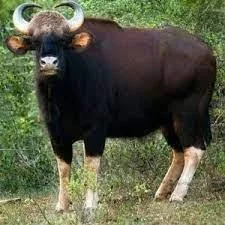
- Physical Features:
-
- Size: The Indian Bison ranges from 240 cm to 340 cm in length, with a tail length of 70 cm to 105 cm.
- Height: Approximately 170 cm to 230 cm.
- Weight: Adult males weigh between 600 kg and 1500 kg, while adult females weigh between 400 kg and 1000 kg.
- Head and Limbs: They have a convex-shaped forehead and very strong, sturdy limbs.
- Horns: Both males and females possess horns that are pale green or yellowish-brown and have a slightly inward curvature.
- Tail: Typically short.
-
- Social Behavior: The gaur is a social animal, generally living in groups of about 30 to 40 individuals.
- Conservation Status:
-
- IUCN Red List: Vulnerable
- Wildlife Protection Act, 1972: Schedule I
- CITES: Listed in Appendix I
-
Nagarjunasagar Srisailam Tiger Reserve (NSTR)
- News: Indian gaur has been spotted in the Nagarjunasagar Srisailam Tiger Reserve (NSTR) in Andhra Pradesh.
- Location and Establishment:
-
- NSTR is situated in the Nallamala hill ranges, an offshoot of the Eastern Ghats, in Andhra Pradesh.
- It became a Tiger Reserve in 1983.
- It covers a total area of 3,727.82 square kilometers, making it India’s largest Tiger Reserve.
-
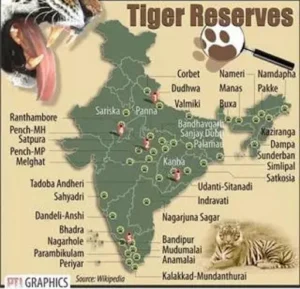
- Constituent Wildlife Sanctuaries:
-
- The reserve includes two wildlife sanctuaries: Rajiv Gandhi Wildlife Sanctuary and Gundla Brahmeswaram Wildlife Sanctuary (GBM).
-
- Geographical Features:
-
- The Krishna River traverses the reserve for approximately 270 kilometers.
-
- Flora: Major plant species in the reserve include Andrographis nallamalayana, Eriolaena lushingtonii, Crotalaria madurensis var, Dicliptera beddomei, Premna hamiltonii, Tectona grandis (teak), and Anogeissus latifolia.
- Fauna: Tiger, Leopard, Wolf, Wild Dog, and Jackal, Sambar, Chital, Chowsingha, Chinkara, Mouse Deer, Wild Boar, and Porcupine, Muggers (crocodiles), Otters, and Turtles etc.
Read also : Urban Heat Island | UPSC
Humid Heat
- News: As per a study, people in India exposed to extreme levels of humid heat during monsoons increased by at least 67 crore over the period 1951-2020.
- Definition:
-
- Humid heat results from high temperatures combined with high levels of moisture in the air.
- This means that sweat does not evaporate as easily, making it harder for the body to cool off.
- Consequently, it can “feel” hotter than the same temperature in a dry environment.
-
- Heat Index:
-
- This perceived temperature is known as the heat index, which describes what the temperature feels like to the body when the air temperature is combined with relative humidity.
- Humid heat tends to be more dangerous because moisture does not evaporate efficiently, causing more heat to remain in the body.
-
- Effects:
-
- Physical Discomfort: It’s common to feel damp and sticky in hot and humid conditions, and you might get covered in sweat after a short period of time outside.
- Low Energy and Lethargy: Humid heat can contribute to feelings of low energy and lethargy.
- Hyperthermia: Overheating due to the body’s inability to effectively release heat. Hyperthermia can cause muscle cramps, fatigue etc.
-
- About Dry Heat
-
- Definition:
- Dry heat occurs when there is low humidity, typically in hot desert climates that receive little precipitation.
- The absence of moisture in the air allows water to evaporate more quickly, making temperatures seem cooler than they would in a humid environment.
- Tolerability:
- Dry heat can feel more tolerable initially because sweat evaporates quickly, providing some relief. However, it can cause dehydration faster.
- Effects:
- Quick Evaporation: In dry air, sweat evaporates quickly off the skin, taking extra heat with it, but this also causes the moisture from saliva and breath to evaporate quickly, resulting in the unpleasant “dry mouth.”
- Dehydration: Dry heat can cause dehydration more rapidly as the body’s moisture evaporates quickly.
- Comparison:
- Humid Heat: Feels hotter, sweat does not evaporate easily, causing more heat retention and physical discomfort.
- Dry Heat: Sweat evaporates quickly, providing initial relief but causing faster dehydration and “dry mouth.”
-
Herpes
- News: According to a recent study, high-income and upper-middle-income nations sustained the highest economic burden from herpes infections in 2016, accounting for more than 75% of the global spending.
- Definition: Herpes is an infection.
- Cause: It is caused by one of two types of Herpes simplex virus (HSV).
- Types of Herpes Simplex Virus:
-
- Type 1 (HSV-1):
- Transmission: Mostly spreads by oral contact.
- Symptoms: Causes infections in or around the mouth (oral herpes or cold sores) and can also cause genital herpes.
- Prevalence: Most adults are infected with HSV-1.
- Type 2 (HSV-2):
- Transmission: Spreads by sexual contact.
-
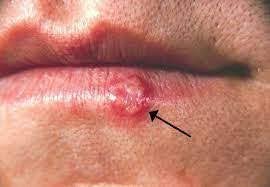
- Symptoms: Causes genital herpes.
-
- Symptoms: Most people have no symptoms or only mild symptoms. When symptoms do occur, they include painful blisters or ulcers that can recur over time.
- Treatment: Medications can reduce symptoms but cannot cure the infection.
- Global Impact:
-
- Around 67% of the global population aged 0-49 have HSV-1 and approximately 13% aged 15–49 years are living with HSV-2 infection.
- India has one of the highest numbers of infected individuals among countries in the Southeast Asia Region
